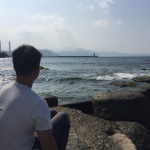 過期麵包、香蕉皮、咖啡渣等廚餘,從2013年起,將搖身一變為挪威首都奧斯陸公車的綠色新能源!該市新設立的沼氣加工廠將負責生產「廚餘能源」,同時供應農業用高營養成分的生物肥料。
過期麵包、香蕉皮、咖啡渣等廚餘,從2013年起,將搖身一變為挪威首都奧斯陸公車的綠色新能源!該市新設立的沼氣加工廠將負責生產「廚餘能源」,同時供應農業用高營養成分的生物肥料。
該沼氣加工廠預計每年能把5萬噸廚餘轉化成具友善環境的綠色能源,供應135台市區公車,也能供應大概足夠應付大約100片中型農地所需的生物肥料。
這種由廚餘、下水污泥和糞便等生物質轉換而來的沼氣,可說是一種「碳中和」的燃料。
奧斯陸已有65台公車採用沼氣做動力來源,目前其來源僅利用從污水處理廠提供的下水污泥。等新設立的沼氣廠在2013年產能最大化後,其燃料足以供應當地運輸公司至少200台公車。
奧斯陸廢棄物能源再生局代理局長艾利克森(Anna-Karin Eriksson)表示:「使用這種沼氣製作成的綠色能源能減少大眾運輸廢氣排放量,也就是懸浮粒子會變少,因此會改善首都的空氣品質。還有,公車行駛過程比較安靜。」由於綠色能源的的使用,50萬人口的奧斯陸,空氣會更好、噪音會更少。
這座新工廠由挪威公司Cambi AS負責建造,該公司經過與數家外商激烈競爭後取得標案,將利用熱水解技術(thermal hydrolysis),把廚餘、污泥用高溫高壓的方式煮沸而製成這種綠色新能源。
截至目前,Cambi公司已在美國、澳洲、智利、日本、杜拜和其他許多歐洲國家蓋了共28間沼氣工廠,總計處理了2300萬人所產生的廚餘和污泥。在挪威,Cambi也有兩座工廠,回收處理家庭廢棄物和事業廚餘。
另外,沼氣製程中產生的殘餘物,也可用來製成液態肥料,其營養成份和複合肥料相比無分軒輊。這間位在奧斯陸北部的新工廠,會負責供應固態、液態生物肥料以及肥料精華液。
Stale bread, banana peels, coffee grounds and other food waste will be transformed into green fuel for Oslo's city buses starting next year. The Norwegian capital's new biogas plant will supply the fuel and also provide nutrient-rich biofertilizer for agriculture.
The plant will be able to process 50,000 tonnes of food waste annually, converting it to environment-friendly fuel for 135 municipal buses as well as enough biofertilizer for roughly 100 medium-sized local farms.
Biogas is a carbon dioxide-neutral fuel produced from biomass such as food waste, sewage sludge and manure.
Currently, 65 Oslo buses are powered by biogas produced from sludge from the city's sewage treatment plant. When the new biogas plant reaches its full capacity in 2013, the local bus company will have enough biogas for at least 200 buses.
"Running on biogas will reduce emissions from public transport, which means less airborne particulate matter and thus improved air quality in Oslo. What's more, the biogas buses run quietly," explains acting plant manager Anna-Karin Eriksson of the Oslo Municipality Waste-to-Energy Agency.
Biogas in buses means cleaner air and less noise for Oslo's 500,000 residents.
The plant is being constructed by the Norwegian company Cambi AS, which won the contract after intense competition with foreign companies.
Oslo's new biogas plant will produce the biogas using a method known as thermal hydrolysis, whereby raw materials such as waste or sewage sludge are boiled under high temperature and high pressure.
To date, the company has designed and delivered 28 plants for converting biodegradable material into renewable energy. Their plants are processing waste and sludge from a total of 23 million people in the United States, Australia, Chile, Japan, Dubai and many European countries.
Cambi has installed two plants for the treatment of household waste and industrial food waste - both in Norway.
The residue from the biogas production process may be used as liquid fertilizer with roughly the same nutrient content as compound fertilizer. The new plant, located north of Oslo, will supply both liquid and solid biofertilizer in addition to a liquid concentrate.







